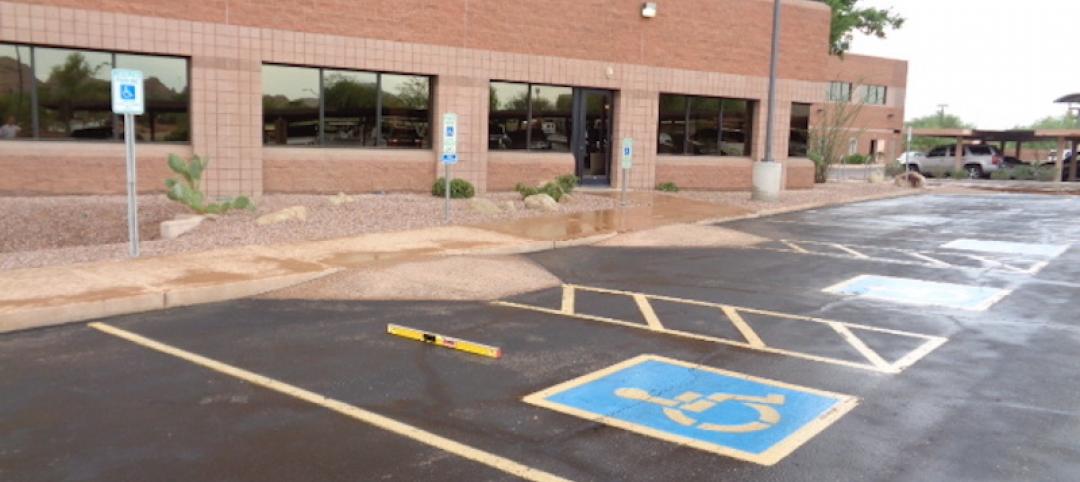From patient care and diagnosis to medical records management to the maintenance of energy-conscious facilities, technology has become a critical component in every aspect of hospital and healthcare design. This parallels the condition of the AEC industries, which have seen a similar sea-change in the way business is conducted. Contract documents have gone from paper to electronic files, with BIM (Building Information Modeling) programs capable of generating digital representations of not only a physical facility, but also its performance and costs over its complete life-cycle. Augmented and virtual reality models enable incredibly realistic walk-throughs of unbuilt spaces, allowing architects to identify and resolve potential problems early in the process, saving time and money for the client.
While the benefits of intelligently deployed technology are abundantly clear to both designers and healthcare end-users, it’s no simple task to manage the integration of technology into a building program. The exponential growth of the field has the potential to expose gaps in the design team’s knowledge, including owner’s responsibilities that manifest in budget shortfalls; marginalized functionality of evidence-based designs; and ultimately, suboptimal facility performance. It’s vital to have a proven strategy for minimizing risk.
Having a sound management plan in place throughout the execution/construction phase of the project is fundamental to the future success of a healthcare facility. Providing regular updates to stakeholders is recommended; for maximal effect, these should be structured working sessions, rather than overwhelming, random information dumps. Ensuring that all project participants have the proper understanding of all phases of the project will help maintain the intended outcome. During the life of a project, changes will occur; systems, equipment, vendors, and other goods or services may not be available. These occurrences are common (especially in tech field), and a smart team will anticipate them. Meaningful discussions should take place to understand the impact of these changes. Perceptive questions—Will patient care be affected? Is there an impact to facilities? Does the change disrupt other systems or have unintended downstream effects?—need to be asked and honestly answered. Incorporating long-term thinking into decision-making is necessary to the change-management process. Too often, a decision will be made solely on price; for instance, specifying a certain material may save $10,000 in up-front costs, but down the road will incur an additional $100,000 per year in maintenance or operational expenses.
Modern technology can provide a 360-degree view of a construction project, allowing all stakeholders at all phases of the job the opportunity to fully participate in the process. While the benefits of this are indisputable, there are ways to improve the experience of the tech-centric design and construction process and improve outcomes for clients. Here are three key areas where technology can help shape the efficient creation and operation of healthcare facilities:
- Information Management: Supporting Communication. As tech needs are diverse, so are the many various solutions available. Assessing the technology requirements of all parties—including administration staff, medical personnel, and facilities managers—early in the design stage will reduce the need to revise plans as the project progresses. This will save money and keep schedule delays under control. While hospitals may want to stretch their budget by buying specific pieces of diagnostic and treatment equipment from different manufacturers, they must also account for the additional costs of “translation” equipment required to make the various systems communicate effectively. Since most hospitals will source equipment from multiple vendors, it’s essential that these information streams are bundled into one language that is readable by existing and/or planned software, computer hardware, and medical equipment.
- Cost Management: Budgeting for Now and Later. From the outset of the planning process, integrate technology into the financial planning for healthcare construction projects. Hospitals should include a line-item in their budgets for technology: it’s increasingly competitive with funding for traditional capital expenditures. Without comprehensive planning and budgeting, owners may be forced to make cuts well into the design and construction process—an action that runs the risk of compromising operations and/or diminishing the design intent.
- Project Management: Staying on Track with Tech. During design and construction, the project’s technology team should meet to review and reevaluate its recommendations and make course corrections as needed. Optimally, these meetings would be scheduled to take advantage of the periodic upgrades to software and hardware systems. As an example, in the case of a hospital project that was slated to be five years in design and four years in construction, the tech team convened three times over the course of the job. This allowed them to learn about, refine, and implement necessary changes to the technological infrastructure in a timely manner.
It can be challenging to guide clients through the complex process of bringing state-of-the-art healthcare facilities online. By leading the discussion of technology at every level, the full value of this life-changing resource can be realized by all stakeholders, from owners to healthcare providers to patients.
More from Author
Rider Levett Bucknall | Aug 14, 2023
Fast-tracking construction projects offers both risk and reward
Understanding both the rewards and risk of fast-tracking a project can help owners, architects, engineers, and contractors maximize the benefits of this strategy and can bring great reward on all fronts when managed properly.
Rider Levett Bucknall | May 31, 2022
Checking out: Tips for converting hotels to housing
Many building owners are considering repositioning their hotels into another property type, such as senior living communities and rental apartments. Here's advice for getting started.
Rider Levett Bucknall | Feb 14, 2022
How building owners and developers can get ahead of the next supply chain disaster
Global supply chain interruptions that started at the very beginning of the pandemic are still with us and compounding every step of the way. Below are a few proven tips on how to avert some of the costly fallout should we be faced with similar commercial disasters at any time in the future.
Rider Levett Bucknall | Jul 24, 2019
Design goooals for football stadiums: Lessons from the U.K. and the U.S.
Both professional soccer and football have vigorously pursued targeted global growth.
Rider Levett Bucknall | Apr 30, 2018
Following—and forecasting—the money: Financial modeling for project managers
To wait until there’s a problem affecting design and construction before consulting with a PM wastes valuable time when a project is at its most vulnerable point.
Rider Levett Bucknall | Jan 11, 2018
Harvesting energy and profits: A new approach to MEP cost analysis
In the course of providing cost estimating services, educating the client on making prudent choices is a high priority.
Rider Levett Bucknall | Sep 6, 2017
Following the money: G702 progress payment certifications
There is no single method of calculating progress payments, but the most common formula is the percentage of completion applied to the total contract price, less a retainage which is held by the owner until final acceptance of the project.
Rider Levett Bucknall | May 3, 2017
Avoiding trouble in paradise: Tips on building successfully in the Caribbean
The island setting itself is at the root of several of these disruptive assumptions.
Rider Levett Bucknall | Feb 8, 2017
Don’t leave your office or business vulnerable to drive-by lawsuits
Across numerous states, unscrupulous attorneys are filing hundreds of “drive-by” lawsuits that are founded on noncompliance with ADA regulations against businesses that often have no idea they have done anything wrong.
Rider Levett Bucknall | Aug 29, 2016
Home maintenance 101: How uninformed homeowners can cause developers big headaches, and what to do about it
By taking a proactive stance, the home-building industry can both educate the public about the importance of home maintenance and raise awareness within the construction community about protecting their professional rights and reputations.















